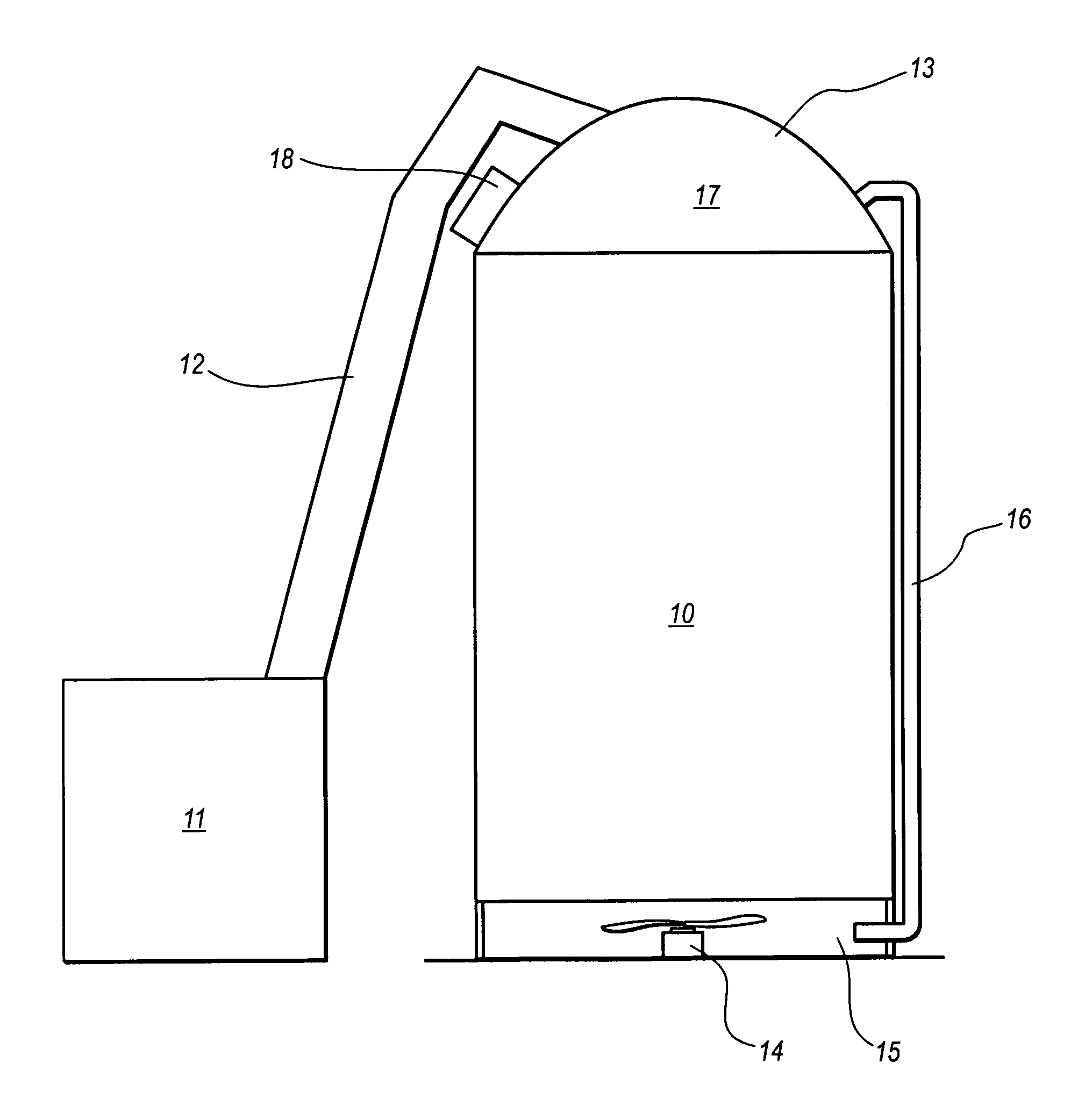Method and apparatus for ozination of grain
a technology of ozination and grain, applied in the field of methods for treating grain, can solve the problems of not being effective in treating mold, fungus, and some bacteria that also infest the surface of grain, and posing a danger, so as to enhance the efficiency of the ozination process, reduce the amount of ozone, and reduce the draw
- Summary
- Abstract
- Description
- Claims
- Application Information
AI Technical Summary
Benefits of technology
Problems solved by technology
Method used
Image
Examples
Embodiment Construction
[0006]The following discussion is directed towards grain stored within a vertical elevator 10. It will be understood by those skilled in the art that the same techniques can be used for grains stored in other facilities. In one embodiment, a quantity of ozone is injected into a grain bin, vessel, or truck prior to the grain being loaded into said container in order to treat the grain for mold, bacteria, fungi, and biological load as the grain is loaded. In another embodiment, grain is delivered to the elevator by truck and is dumped into a loading bin 11 which has placed near its bottom an auger 12 which transports the grain from the loading bin to the top of the elevator 13. In this embodiment, the loading bin is partially enclosed and has injected therein a sufficient quantity of ozone to create a concentration of approximately 100 ppm within the loading bin and the enclosed auger. Because ozone not only kills insects but also tends to drive insects away, the auger and loading bin...
PUM
 Login to View More
Login to View More Abstract
Description
Claims
Application Information
 Login to View More
Login to View More - R&D
- Intellectual Property
- Life Sciences
- Materials
- Tech Scout
- Unparalleled Data Quality
- Higher Quality Content
- 60% Fewer Hallucinations
Browse by: Latest US Patents, China's latest patents, Technical Efficacy Thesaurus, Application Domain, Technology Topic, Popular Technical Reports.
© 2025 PatSnap. All rights reserved.Legal|Privacy policy|Modern Slavery Act Transparency Statement|Sitemap|About US| Contact US: help@patsnap.com

